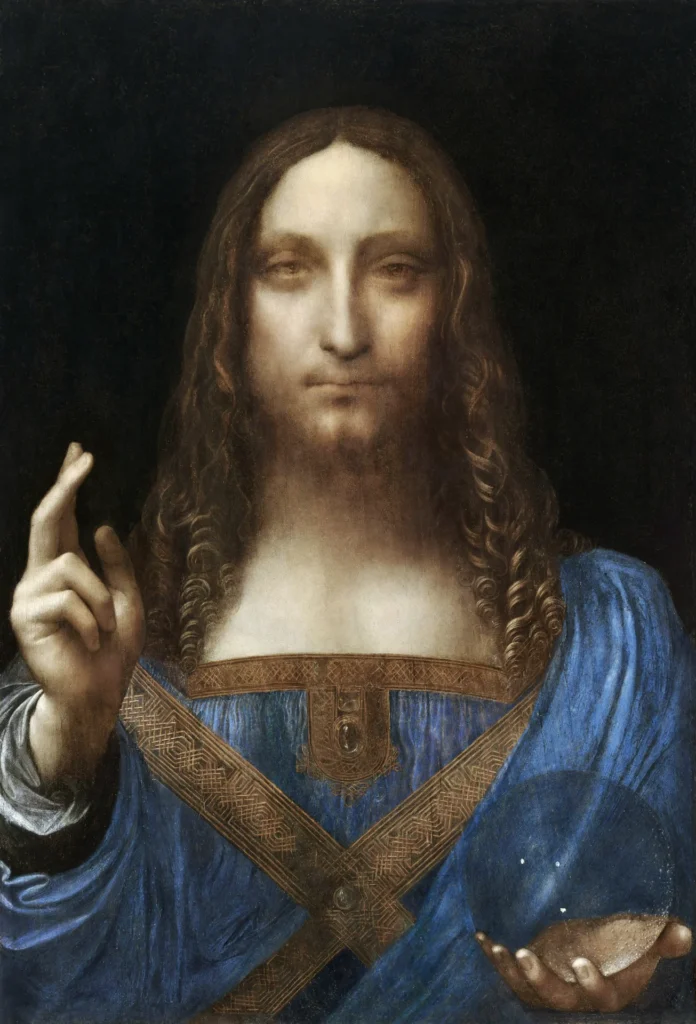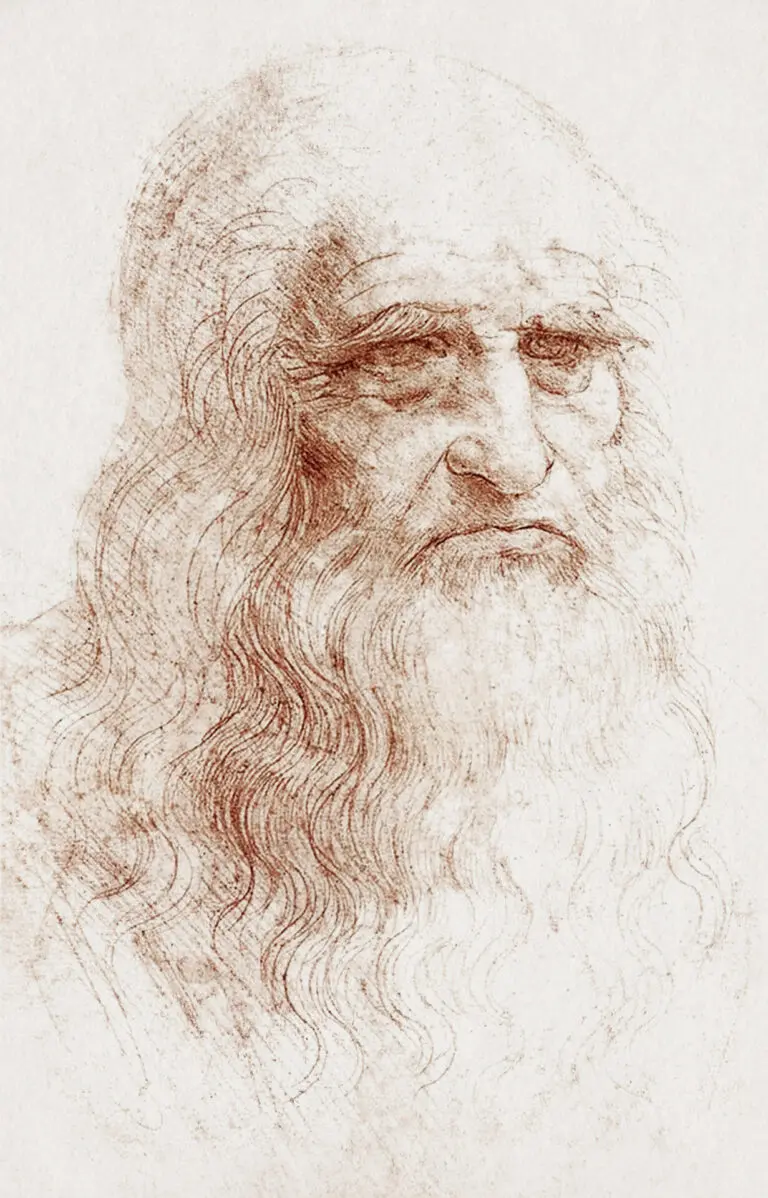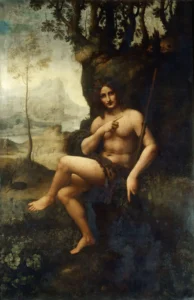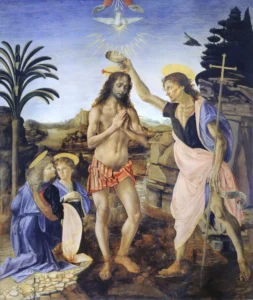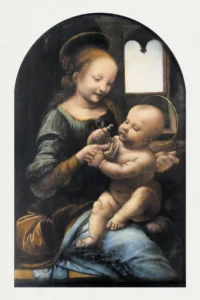Salvator Mundi (1500)
Created between 1499 and 1510, Salvator Mundi captures Jesus Christ in a serene pose, holding a crystal orb while blessing the viewer. This stunning painting exemplifies Leonardo da Vinci's innovative use of sfumato, showcasing his exceptional talent in light, shadow, and detail. Discovered in 2005 and authenticated through rigorous examination, it represents both the pinnacle of Renaissance art and a fascinating story of lost and rediscovered brilliance.
1499 - 1510
About the Artwork
Did You Know
Liked what you see? Add it to your collection.
Enjoyed reading? Share it.
... continued
Key Details
- Subject and Composition: The painting depicts a half-length figure of Jesus Christ facing frontally, holding a transparent, non-refracting crystal orb in his left hand and raising his right hand in a gesture of blessing. Christ is shown in blue Renaissance attire, with long, flowing hair and a beard, typical of Renaissance representations of Jesus.
- Technique and Style: The painting showcases Leonardo's mastery of sfumato, a technique that creates subtle gradations of light and shadow. The finely detailed curls of Christ's hair, the soft painting of his face, and the careful rendering of his drapery are characteristic of Leonardo's later works.
- Provenance: The painting was first recorded in the art collection of King Charles I of England in 1649. Later sold, returned to the Crown, and passed through various owners, including the Duke of Buckingham. After being lost for years, it was rediscovered in 2005 in an American estate, heavily over-painted and its authorship forgotten until extensive conservation.
Authentication
The painting's attribution to Leonardo da Vinci is supported by several factors: Its relationship to two autograph preparatory drawings by Leonardo in Windsor Castle; its correspondence to the composition documented in Wenceslaus Hollar’s etching of 1650; its superiority to more than 20 known painted versions of the composition; the presence of pentimenti, which are not found in copies; the painting's adherence in style to Leonardo’s known works from around 1500.
Conservation and Exhibition
After extensive conservation treatment, the painting was examined by international scholars who reached a broad consensus that it was an original work by Leonardo da Vinci. It was included in the exhibition "Leonardo da Vinci: Painter at the Court of Milan" at the National Gallery in London from November 2011 to February 2012.
Ownership and Sale
The painting was sold at Christie's auction house in 2017 for a record-breaking price. It is currently owned by Abu Dhabi's Department of Culture and Tourism, with some reports suggesting it is held by Mohammad bin Salman for the Louvre Abu Dhabi.
Dating and Patronage
There is some variation in the dating, with some scholars placing it in the late 1490s and others after 1500. Possible patrons include Isabella d'Este, Duchess of Milan, and Pope Leo X, although the exact patron remains uncertain.
The Salvator Mundi is one of fewer than 20 surviving paintings accepted as being from Leonardo da Vinci's own hand and retains a remarkable presence and haunting sense of mystery characteristic of his finest works.




